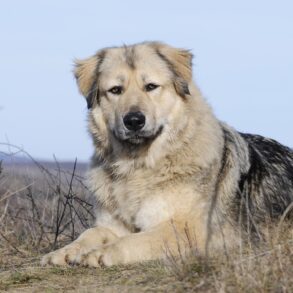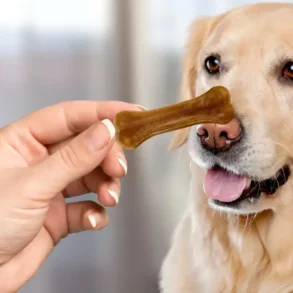This World Veterinary Day 2024, watch out for these frequently diagnosed eye problems in dogs and cats and check these expert tips to care for your pet’s eyes
As devoted pet owners, ensuring the well-being of our furry companions extends beyond regular meals and playtime where the eyes, often referred to as the windows to the soul, require special attention to maintain the overall health and happiness of our dogs and cats. From environmental factors to genetic predispositions, pets can face various eye issues that might impact their vision and overall comfort.

Common Eye Issues in Dogs and Cats
In an interview with HT Lifestyle, Dr Dharmraj P Raibole, Veterinary Surgeon and Radiologist at Pet Cure and Care Surgical Centre and Medical Advisor at Entod Pharmaceuticals, revealed a list of frequently diagnosed eye problems in pets that encompass a range of conditions –
- Conjunctivitis: Whether viral or bacterial, conjunctivitis can trigger corneal inflammation. Infections may be linked to factors like feline herpesvirus, allergies or trauma.
- Glaucoma: This painful condition results from fluid buildup in and around the eyes, characterised by bulging, touch sensitivity and fluid accumulation.
- Cataracts: Manifesting as cloudy or white areas in the eyes, cataracts obstruct light passage to the retina.
- Dry Eye Disease: This condition hampers the production of the protective film on the eye surface and within the eyelids. Certain breeds, like Cocker Spaniels, may be more prone to dry eye problems.
- Cherry Eye: Focusing on the third eyelid, cherry eye is identified by noticeable swelling.
- Corneal Ulcers: These ulcers may stem from various causes such as glaucoma, dry eye disease, conjunctivitis, or traumatic injury. Brachycephalic breeds may be more susceptible.
Dr Dharmraj P Raibole asserted, “Addressing these issues promptly is crucial, as untreated eye problems can lead to further health complications, pain, reduced activity levels, and social withdrawal. Prioritising both preventive measures and seeking professional assistance upon symptom appearance is key to maintaining optimal eye health in pets.”
How to Care for Your Pet’s Eyes
Taking care of your dog or cat’s eyes is a straightforward yet vital aspect of responsible pet ownership. Dr Dharmraj P Raibole suggested the proactive measures and essential tips to protect your pets’ precious eyes, promoting a lifetime of clear vision and joyous moments together –
- Regular Inspection: Perform a daily check on your pet’s eyes, looking for signs of redness, swelling, or injury. Healthy eyes should appear bright, clear, and moist. If you notice anything unusual, contact your veterinarian promptly, as addressing eye disorders early is crucial.
- Gentle Cleaning: Clean your pet’s eyes regularly to eliminate any discharge. Use a clean, damp cloth to gently wipe the corners of the eyes, preventing infections or irritations. Consult your veterinarian about the use of eyedrops for cleaning and moisturizing your pet’s eyes.
- Trimming Hair Around the Eyes: Long hair or lashes around the eyes can potentially scratch the cornea, leading to discomfort and inflammation, especially in long-haired breeds. Use sharp scissors with caution to trim excess hair during grooming sessions.
- Routine Eye Examinations: Schedule regular eye examinations to catch any disorders early on. Your veterinarian will thoroughly examine your pet’s eyes, identify abnormalities, and recommend appropriate treatments if necessary.
- Nutrient-Rich Diet: Support your pet’s eye health by providing a balanced diet rich in essential nutrients, vitamins, and antioxidants. Antioxidants, such as lutein, astaxanthin, and zeaxanthin, contribute to reducing oxidative stress and supporting the immune system and eye function. Foods like kale, spinach, blueberries, carrots, sweet potatoes, broccoli, and wild salmon are excellent sources of these vital nutrients.
Dr Dharmraj P Raibole advised, “Feeding a high-quality diet is essential; consider a raw, species-appropriate diet if possible. If opting for dry food, choose a reputable product and supplement your pet’s diet with fresh ingredients like fruits, vegetables, and organ meat to meet their nutritional needs effectively. Prioritizing your pet’s diet contributes significantly to their overall well-being, including eye health.”
He concluded, “The well-being of your beloved pet’s eyes is a testament to your commitment to their overall health. By incorporating these simple yet effective practices into your routine, you not only enhance their visual comfort but also fortify their resilience against potential eye issues. Regular attention, meticulous grooming, and a nutritionally sound diet collectively contribute to a brighter, clearer vision for your furry companion. Remember, your proactive efforts today ensure a future where your pet sees the world through healthy and happy eyes.”
Catch your daily dose of Fashion, Taylor Swift, Health, Festivals, Travel, Relationship, Recipe and all the other Latest Lifestyle News on Hindustan Times Website and APPs.
This post was originally published on this site be sure to check out more of their content.







































